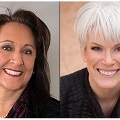More than ever, today’s legal management professionals are expected to have leadership capabilities. Deciding on which skills and behaviors to build into each firm’s environment can only be truly effective if the leader is willing to seek feedback about their own strengths and weaknesses from those they serve. The downside of this practice is that it can sting. The upside is that the legal manager is modeling a very powerful leadership behavior that will have long-term benefits to both themselves and the firm.
This article will encourage the reader to consider modeling the foundational practice of leadership development, thereby increasing self-awareness through seeking feedback. It will challenge the reader to push themselves outside their comfort zone and consider an action plan to increase self-awareness, seek feedback and commit to applying new learnings.
It should be no surprise to any reader that today’s law firms are being run like businesses because, in fact, they are businesses. Law firms provide a service to their clients, and to do this, they must hire great lawyers to do great lawyering. They also need high-performing business services staff to be sure the infrastructure supports the lawyers in such a way that the lawyers can spend their time building relationships with clients, earning more business and providing excellent legal services.
For lawyers to be 100% focused on their work, the business services team needs to be 100% focused on supporting the legal services being developed and delivered to clients. They must operate as a highly functional and cohesive work team.
One question legal management professionals often ask is, “What’s changed — what do I need to know today that I may not have learned yesterday? I’ve been in a leadership role for over a decade (or two) and I’ve made it this far. What is there to learn?”
There are two answers. The first answer is “nothing,” because for some law firms, little or nothing has changed internally. The second answer is “everything,” because some firms are embracing change initiated by external factors more quickly. It will be no surprise to any reader of this CE course that many law firms are slow to change. Firms are filled with brilliant but risk-averse people; as a result, internal change happens slowly.
Outside of law firms, change is happening rapidly. In fact, the description for change often used today is the acronym VUCA: “Coined in the late 1990s, the military-derived acronym stands for the volatility, uncertainty, complexity and ambiguity — terms that reflect an increasingly unstable and rapidly changing business world. This new VUCA environment will require HR and talent management professionals to change the focus and methods of leadership development.” (1)
This VUCA environment has caught many law firm leaders off-guard — and it’s human nature to protect oneself against threats. As a result, the “stick your head in the sand and wait until it passes” approach has been a leadership strategy for many law firm leaders for years. While this approach may have been successful in the past, today it puts leaders and the firm at a disadvantage. Too much is changing externally, and leaders need to have the courage to look within and around in order to add value in their roles at today’s law firms.
Fortunately, the field of leadership development is keeping pace with the VUCA environment. In fact, Bob Johansen, Distinguished Fellow at the Institute for the Future and the author of Leaders Make the Future: Ten New Leadership Skills for an Uncertain World, proposes that the best VUCA leaders are characterized by vision, understanding, clarity and agility — the “flips” to the VUCA model.(1)
Contemporary lawyers are also experiencing VUCA. They are being asked to guide and execute for their clients in a landscape that is changing every day. They are experiencing new technology and having to adopt new ways of working with Millennial associates. The practice of law is different today than it was in the past, which is affecting the health and well-being of our lawyers and those around them. This is all the more reason that administrative leaders of today’s firms must be at their best and continuously add value to their firms.
In his book Leadershift, John C. Maxwell describes 11 shifts that today’s leaders need to be successful. Maxwell recognizes that change is so rapid that more is needed today than in the past to lead successfully. Each shift sets the leader up for new and exciting possibilities, strengthening their leadership abilities.
As with all leadership success, the first shift required is a mindset shift.(2) Maxwell describes this as when leaders are open to change and willing to look within and start asking themselves questions. Additionally, they have a willingness to look up and around and become better listeners and observers. Maxwell also challenges leaders to think about to what extent they are willing to rely more on their intuition and creativity rather than just facts. Leadershifting requires leaders to let go of some old habits and be dedicated to building new ones to become more effective leaders.
As more and more lawyers are expecting their administrative leaders to look up and around to see what is on the horizon, they recognize they can’t lead their firms into the future on their own. They need to have administrative leaders with courage, resilience, foresight and self-awareness to help drive the firm forward. For this reason, our administrative leaders must be introspective, continuously seek feedback, consider how that feedback can be helpful and use it to strengthen their leadership performance.
BEING AN EXEMPLARY LEADER STARTS WITH SELF-AWARENESS
Self-awareness is the foundation of leadership development. In Daniel Goleman’s article “What Makes a Leader?”3 he stunned the business world by providing research stating “that the most effective leaders are alike in one crucial way: They all have a high degree of what has come to be known as emotional intelligence.”
Emotional intelligence was coined by researchers Peter Salovey and John Mayer. In practical terms, emotional intelligence combines the awareness that emotions can drive our behavior and impact people (positively and negatively) and the need to learn how to manage those emotions — both our own and others’ — especially when we are under pressure.
In the article, Goleman states: “It’s not that IQ and technical skills are irrelevant; they do matter, but mainly as ‘threshold capabilities;’ that is, they are the entry-level requirements for executive positions. But my research, along with other studies, clearly shows that emotional intelligence is the sine qua non of leadership. Without it, a person can have the best training in the world, an incisive analytical mind, and an endless supply of smart ideas, but he or she still won’t make a great leader.”(3)
Goleman goes on to explain that self-awareness is the first component of emotional intelligence. In Goleman’s terms, self-awareness means having a deep understanding of one’s emotions, strengths, weaknesses, needs and drives. People with strong self-awareness are neither overly critical nor unrealistically hopeful. Rather, they are honest — with themselves and others.

